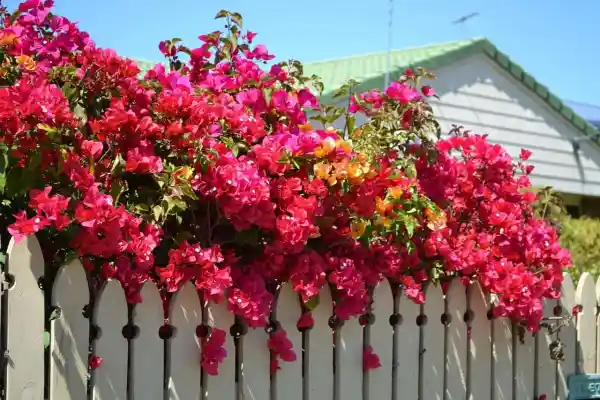Bougainvillea, with its vibrant and colorful bracts, is a popular ornamental plant that adds beauty to gardens, landscapes, and homes. Cultivating healthy and thriving Bougainvillea requires proper care and attention to its specific needs. In this expert guide, we’ll provide comprehensive instructions on how to grow Bougainvillea flowers successfully, referencing information from reputable government bodies, horticultural organizations, and academic experts.
Introduction to Bougainvillea
Bougainvillea is a genus of flowering plants known for its eye-catching bracts, which come in various colors, including shades of pink, red, orange, and purple. Understanding the characteristics of Bougainvillea is crucial before embarking on its cultivation.
Selecting the Right Bougainvillea Variety
Consult local horticultural experts or the United States Department of Agriculture (USDA) plant hardiness zone map to identify Bougainvillea varieties that are best suited for your region and the intended use, whether it’s for potted plants or outdoor landscaping.
Choosing the Ideal Planting Location
Bougainvillea thrives in full sun and well-drained soil. Select a planting location that receives at least six hours of direct sunlight per day. Ensure the soil is well-drained and slightly acidic. Conduct a soil test through your local Agricultural Extension Office to determine the pH and nutrient content.
Planting Bougainvillea
Follow these steps when planting Bougainvillea:
Prepare the Soil
Work the soil to improve drainage and incorporate organic matter like compost or peat moss.
Dig a Hole
Dig a hole twice as wide and as deep as the root ball of the plant.
Planting
Place the Bougainvillea in the center of the hole at the same depth it was in the nursery container.
Watering
Water thoroughly after planting to help establish the plant’s roots.
Proper Watering and Fertilization
Bougainvillea requires consistent moisture, especially during the growing season. Water deeply but allow the soil to dry out slightly between waterings. Use a balanced, water-soluble fertilizer according to local recommendations from the Agricultural Cooperative Extension.
Pruning and Maintenance
Regular pruning is essential for shaping and rejuvenating Bougainvillea. Prune after flowering to remove dead or diseased branches and maintain the desired shape. Be cautious not to over-prune, as this can affect blooming.
Pest and Disease Management
Bougainvillea can be prone to common pests like aphids and mealybugs. Consult the National Plant Board and the American Horticultural Society for comprehensive guides on identifying and managing pests and diseases specific to Bougainvillea in your region.
Winter Care
In colder regions, Bougainvillea should be protected from frost and freezing temperatures. Consider moving potted plants indoors or provide cover for outdoor plants during winter.
Resources for Further Information
For in-depth knowledge and expert advice on Bougainvillea cultivation, refer to resources from renowned horticultural experts and institutions, such as:
United States Department of Agriculture (USDA)
www.usda.gov
Agricultural Cooperative Extension
Contact your local extension office for personalized guidance and resources.
National Plant Board
www.nationalplantboard.org
What is Bougainvillea, and what makes it a popular choice for gardens and landscapes?
Bougainvillea is a genus of flowering plants known for its colorful bracts. It’s popular for its vibrant and long-lasting display of colors, adding beauty to various settings.
How do I choose the right Bougainvillea variety for my region and landscaping needs?
Consult local horticultural experts or the USDA plant hardiness zone map to determine the Bougainvillea varieties suitable for your area and the purpose, whether it’s for pots, trellises, or landscaping.
What are the sunlight and soil requirements for Bougainvillea?
Bougainvillea thrives in full sun, requiring at least six hours of direct sunlight daily, and well-drained soil that is slightly acidic.
When is the best time to plant Bougainvillea?
Plant Bougainvillea in late spring or early summer when the threat of frost has passed and temperatures are warm.
How should I prepare the soil for planting Bougainvillea?
Improve drainage and fertility by working the soil and incorporating organic matter like compost or peat moss.
What is the recommended watering and fertilization schedule for Bougainvillea?
Water deeply but allow the soil to dry out slightly between waterings. Use a balanced, water-soluble fertilizer following local recommendations.
How should I prune Bougainvillea for optimal growth and flowering?
Prune Bougainvillea after flowering to remove dead or diseased branches and maintain the desired shape. Avoid over-pruning, as it may affect blooming.
What are common pests and diseases that affect Bougainvillea, and how can I manage them?
Common pests include aphids and mealybugs. For comprehensive pest and disease management, consult resources from the National Plant Board and the American Horticultural Society.
Can Bougainvillea survive in colder climates, and if so, what precautions should be taken during winter?
Bougainvillea is sensitive to frost and freezing temperatures. In colder regions, consider overwintering potted plants indoors or providing outdoor cover to protect them.
Where can I find more information and expert resources on growing Bougainvillea?
Explore resources from the USDA, your local Agricultural Cooperative Extension, and the National Plant Board for personalized guidance and horticultural expertise on cultivating Bougainvillea.
- Best THC Sodas to Buy in Arkansas - May 28, 2025
- Exploring THC-Infused Sodas in Arkansas - May 28, 2025
- THC Beverages Now Trending in Alabama - May 28, 2025




